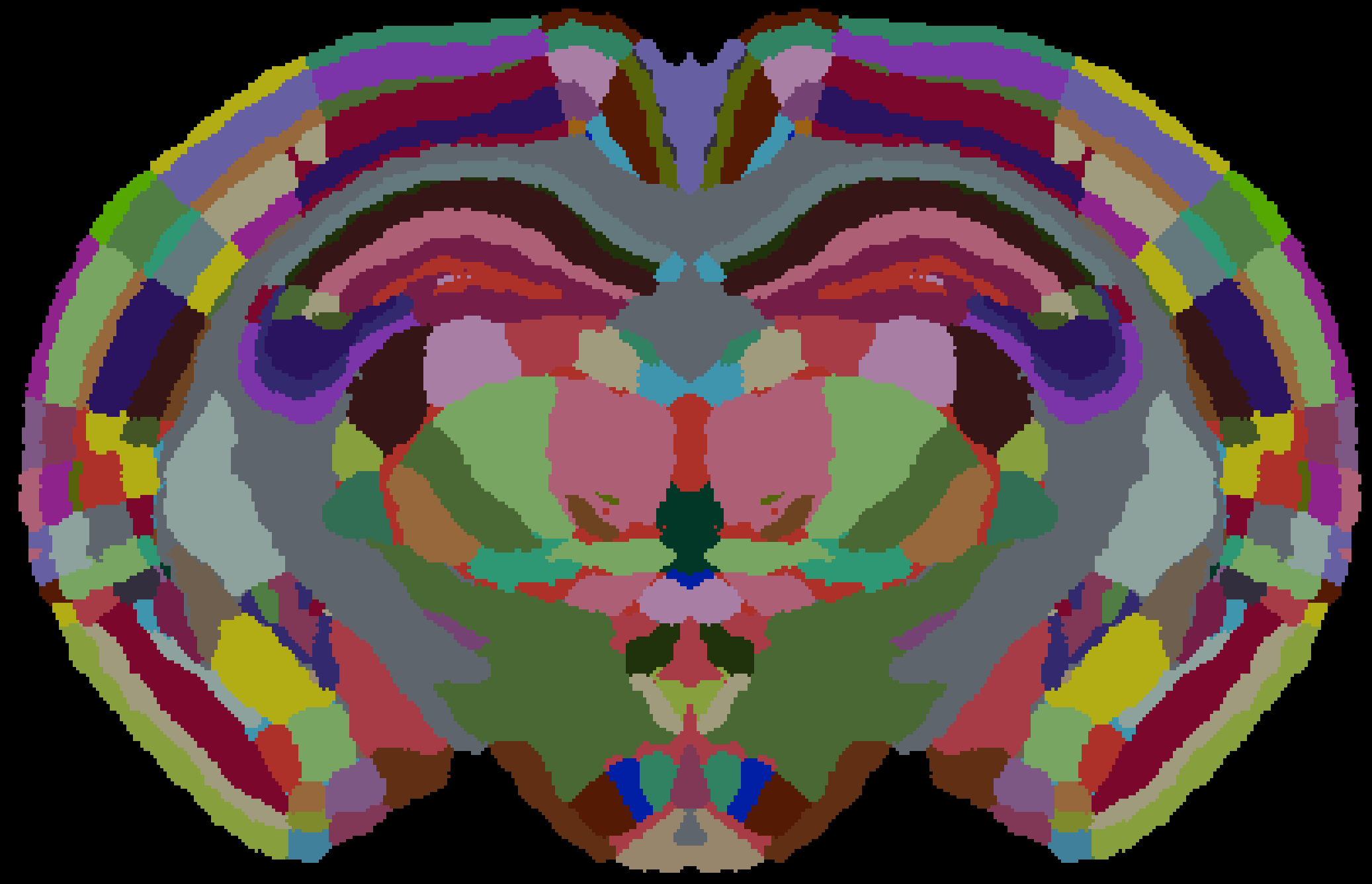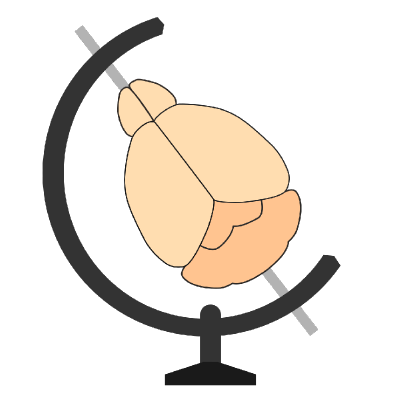An atlas for the prairie vole Microtus ochrogaster has been added to BrainGlobe#
Prairie voles are a valuable model species for studying social interaction due to their characteristic pair-bonding behavior. The brain of this species is structured similarly to the mouse and is only 30% larger, meaning it is particularly well suited to methods to map brain anatomy and function using light microscopy, such as light-sheet fluorescence microscopy and serial section two-photon microscopy.
To fully adopt these brain mapping techniques, a brain atlas is required (to use with tools such as brainreg). Such an atlas was created by Gustison et al. (2024), and has been packaged into the BrainGlobe format by Sacha Hadaway-Andreae in collaboration with the BrainGlobe team.

Figure 1. Coronal view of the prairie vole brain atlas annotations.
This atlas can now be used within the BrainGlobe ecosystem, with the atlas name: prairie_vole_25um.
How do I use the new atlas?#
You can use the prairie vole atlas for visualisation like other BrainGlobe atlases. To visualise the atlas, you could follow the steps below:
Install BrainGlobe (instructions)
Open napari and follow the steps in our download tutorial for the prairie vole atlas
Visualise the different parts of the atlas as described in our visualisation tutorial
To use the atlas with other software such as brainreg, please follow the instructions for those tools, and simply choose this atlas from the user interface.
Note
To use this atlas, you will need the latest version of the BrainGlobe Atlas API. If you have an older version,
please update to at least version 2.0.10 with pip install -U brainglobe-atlasapi.
Why are we adding new atlases?#
A fundamental aim of the BrainGlobe project is to make various brain atlases easily accessible by users across the globe. If you would like to get involved with a similar project, please get in touch.
